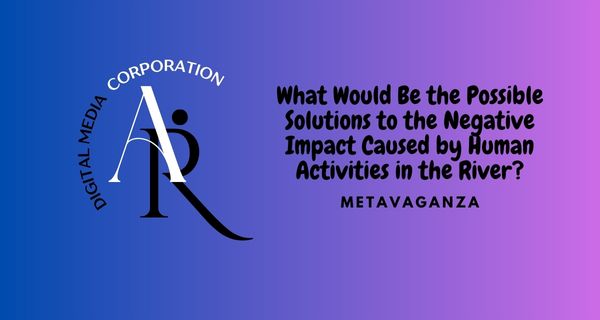CRM Software : What Would Be the Possible Solutions to the Negative Impact Caused by Human Activities in the River? – Rivers are vital ecosystems that provide numerous benefits to both humans and the environment.
However, human activities can have a detrimental impact on these precious waterways. Pollution, habitat destruction, and overexploitation are just a few of the negative consequences of human intervention in rivers.
What Would Be the Possible Solutions to the Negative Impact Caused by Human Activities in the River?
In this article, we will explore the possible solutions to mitigate the harmful effects caused by human activities in rivers, ensuring their preservation for future generations.
Understanding the Negative Impact
1. The Ramifications of Pollution on River Ecosystems
Pollution in rivers poses a severe threat to the delicate balance of aquatic ecosystems. Industrial waste, agricultural runoff, and improper disposal of household waste contaminate the water, endangering the lives of various species and disrupting the ecological equilibrium.
2. Habitat Destruction: A Grave Concern
Human intervention often leads to the destruction of river habitats. Activities such as dam construction, deforestation, and urbanization result in the loss of critical breeding grounds and feeding areas for aquatic organisms, pushing them towards endangerment or extinction.
4. Overexploitation: Unsustainable Practices
Overexploitation of river resources, such as excessive fishing and sand mining, can exhaust the natural stocks of fish and other aquatic species. This disrupts the delicate food chain and threatens the biodiversity of the entire river ecosystem.
Related Article : 7 Best CRM Software 2023
Possible Solutions to Mitigate the Negative Impact
1. Implementing Stringent Pollution Control Measures
According Gnews, To combat pollution in rivers, it is crucial to establish and enforce strict pollution control measures. Industries must adopt eco-friendly practices and treat their waste before releasing it into the water. Additionally, promoting awareness about responsible waste management among communities can help reduce pollution at the source.
2. Promoting Sustainable Agriculture
Agricultural runoff is a significant contributor to river pollution. Encouraging farmers to adopt sustainable agricultural practices, such as organic farming and proper use of fertilizers, can minimize the harmful impact of agricultural activities on rivers. Governments can provide incentives and support to farmers who prioritize environmentally friendly methods.
3. Restoring and Protecting Riverine Habitats
Efforts should be made to restore and protect river habitats. This involves reforesting riverbanks, establishing protected areas, and creating buffer zones along rivers to prevent encroachment. Restoring natural riverine habitats will help revive biodiversity and improve the overall health of the ecosystem.
4. Sustainable Water Management
Managing water resources sustainably is crucial for the well-being of rivers. Governments and communities must develop comprehensive water management plans that balance the needs of both humans and the environment. This includes setting limits on water extraction, promoting water conservation, and ensuring adequate flow in the rivers to maintain their ecological integrity.
5. Responsible Fishing Practices
To prevent overexploitation, fishing practices must be regulated and monitored. Governments should implement catch limits, enforce fishing seasons, and promote sustainable fishing methods. Educating fishermen about the importance of responsible fishing practices can help preserve fish stocks and maintain the ecological balance of the river.
6. Collaboration and Stakeholder Involvement
Addressing the negative impact on rivers requires collaborative efforts. Governments, local communities, environmental organizations, and industries should come together to develop and implement comprehensive river conservation strategies. Engaging stakeholders and fostering partnerships will lead to more effective solutions and ensure the long-term preservation of river ecosystems.
FAQs About Solutions to the Negative Impact in Rivers
Q1: What role can individuals play in mitigating the negative impact on rivers?
Individuals can contribute by reducing their water consumption, properly disposing of waste, and participating in river clean-up initiatives. Supporting organizations working for river conservation and raising awareness about the importance of preserving rivers can also make a significant difference.
Q2: How can industries minimize their impact on rivers?
Industries should prioritize sustainable practices, such as implementing advanced wastewater treatment systems and minimizing the use of hazardous chemicals. They can also invest in technologies that reduce water consumption and participate in river restoration projects.
Q3: Are there any international agreements or conventions addressing river conservation?
Yes, several international agreements focus on river conservation. For example, the Ramsar Convention aims to protect and conserve wetlands, including rivers and their associated habitats. The Water Framework Directive in the European Union sets guidelines for the sustainable management of water resources.
Q4: Can dams be constructed in an environmentally friendly manner?
Yes, environmentally friendly dam construction is possible through the adoption of fish passage systems, ensuring adequate water flow downstream, and considering the ecological impact during the planning and design phases. Proper environmental assessments and stakeholder engagement are vital to minimize the negative effects of dam construction.
Q5: How does river conservation benefit human communities?
River conservation provides numerous benefits to human communities. Healthy rivers support biodiversity, provide clean water for drinking and irrigation, offer recreational opportunities, and contribute to the overall well-being of surrounding communities. Preserving rivers also helps mitigate the impacts of climate change by acting as natural flood buffers.
Q6: How can we monitor the health of rivers?
Monitoring the health of rivers involves regular water quality testing, tracking the abundance and diversity of aquatic species, and assessing the physical characteristics of the river, such as flow rates and sediment composition. These monitoring efforts provide valuable data for evaluating the effectiveness of conservation measures.
Conclusion
The negative impact caused by human activities in rivers poses a significant threat to these invaluable ecosystems. By implementing stringent pollution control measures, promoting sustainable agriculture, restoring habitats, practicing responsible fishing, and fostering collaboration among stakeholders, we can mitigate these harmful effects and ensure the preservation of rivers for generations to come. It is our collective responsibility to safeguard these natural wonders and secure a sustainable future for both the environment and ourselves.






[…] Related Article : What Would Be the Possible Solutions to the Negative Impact Caused by Human Activities in the River? […]